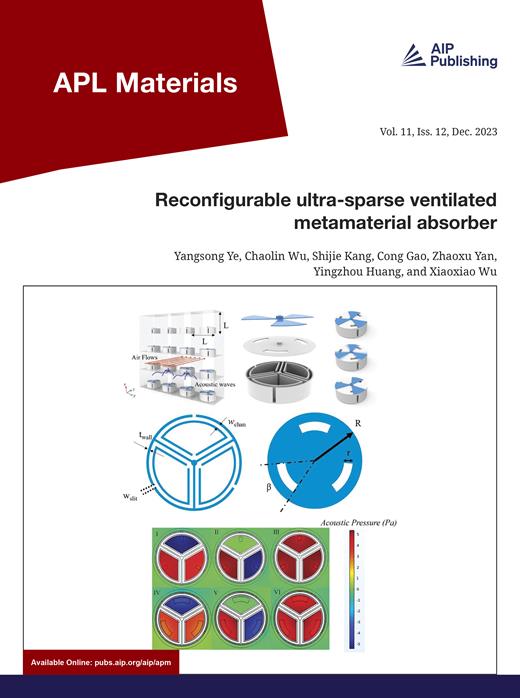键合描述和应变调节对双金属导电转变的影响
IF 5.3
2区 材料科学
Q2 MATERIALS SCIENCE, MULTIDISCIPLINARY
引用次数: 0
摘要
由于电子-离子相互作用的处理方法以及从半金属到半导体转变过程中临界应变模式的不同,层状铋(Bi)晶体中相应的应变调制机制仍然难以捉摸。本研究基于密度泛函理论,比较研究了范德华(vdW)校正对平衡/应变状态下铋晶体结构和电学性质的影响。研究发现,vdW 修正能更好地描述平衡/应变条件下铋的层状晶体和带隙结构。通过 vdW 修正,铋可以在实验可用的较小压缩范围内从半金属转变为半导体。这种转变是由导带最小值和价带最大值的转移引起的,与铋的费米级附近的近带边缘能态的竞争有关。本研究结果不仅为准确研究铋或铋基固有纳米结构材料等复杂模型体系的晶体结构和电子特性提供了指导,而且揭示了铋的应变调节机制,并预测了其在半导体电子器件中的潜在应用。本文章由计算机程序翻译,如有差异,请以英文原文为准。
Effect of bonding description and strain regulation on the conductive transition of Bi semimetal
Due to the differences in the treatment methods of the electron–ion interaction and the critical strain mode of the transition from semimetals to semiconductors, the corresponding strain modulation mechanism in layered bismuth (Bi) crystals remains elusive. In this work, the effects of van der Waals (vdW) correction on the crystal structure and electrical properties of Bi in an equilibrium/strained state are comparatively studied based on the density functional theory. It is found that vdW corrections can better describe the layered crystal and bandgap structure of Bi under equilibrium/strain conditions. With the vdW modification, bismuth can be converted from a semimetal to a semiconductor within a small compression range that is experimentally available. This transition is induced by the transfer of the conduction band minimum and the valence band maximum and is related to the competition of the near-band edge energy state near the Fermi level of bismuth. The present results not only provide guidance for the accurate study of the crystal structure and electronic properties of complex model systems, such as Bi or Bi-based inherently nanostructured materials, but also reveal strain regulation mechanism of Bi and predict its potential application in the semiconductor electronic devices.
求助全文
通过发布文献求助,成功后即可免费获取论文全文。
去求助
来源期刊

APL Materials
NANOSCIENCE & NANOTECHNOLOGYMATERIALS SCIE-MATERIALS SCIENCE, MULTIDISCIPLINARY
CiteScore
9.60
自引率
3.30%
发文量
199
审稿时长
2 months
期刊介绍:
APL Materials features original, experimental research on significant topical issues within the field of materials science. In order to highlight research at the forefront of materials science, emphasis is given to the quality and timeliness of the work. The journal considers theory or calculation when the work is particularly timely and relevant to applications.
In addition to regular articles, the journal also publishes Special Topics, which report on cutting-edge areas in materials science, such as Perovskite Solar Cells, 2D Materials, and Beyond Lithium Ion Batteries.
 求助内容:
求助内容: 应助结果提醒方式:
应助结果提醒方式:


